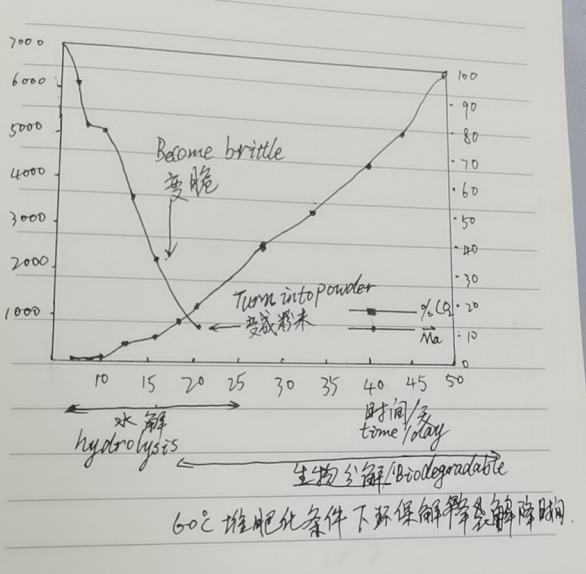In Japan, Jiuxinda PLA biodegradable bags have passed the mildew resistance test and the sanitation and safety certification of Food Sanitation Law No. 370. Due to the successful introduction of food containers in the canteens of the Ministry of Agriculture, Forestry and Fisheries and the Ministry of Economy, Trade and Industry, and the practicality and reproducibility of the main materials for various food packaging bags at the Aichi Expo site have been demonstrated, Jiu Xinda PLA Biodegradable Packaging Bags In the future, its application in food packaging has been highly recognized by Japan’s hygiene and safety.

Because PLA biodegradable packaging bags have asymmetric carbon and are optically active, PLA also starts from the L-body and has high optical activity depending on the structure, which may result in unprecedented special hetero-optical components.
From corn starch to PLA biodegradable packaging bag, LA monomer is obtained by dehydration and dimerization of lactic acid, and then polylactic acid is prepared by ring-opening polymerization. It is currently the most commonly used experimental method and industrial preparation method, with material sources, preparation methods, and application fields And the circular chain of biodegradation.

PLA biodegradable packaging bags are made of L-lactic acid made by starch fermentation method as raw material, and then synthesized by chemical polymerization method. So it is a macromolecular substance between microbial production and chemical synthesis. The amylase of corn, potato, etc. promotes the hydrolysis to produce D-glucose, which is then fermented by lactic acid to produce L-lactic acid, and then L-lactic acid is heated and polycondensed to form lactic acid oligomers, which are then ring-opened and polymerized to a molecular weight of 300,000 to 900,000. L-lactic acid. This method is called L-lactide hair, and is the most commonly used method. However, recently, PLA with a molecular weight of 100,000 to 200,000 has been successfully prepared by direct dehydration and condensation of lactic acid.
The tensile strength and elongation of PLA film are almost the same as PET. Take a biaxially stretched film as an example. The tensile strength and elongation of PLA are 190MPa and 135%, while PET are 235MPa and 130%, but the problem is that the melting point of PET is 264°C, while PLA is only 170°C.






